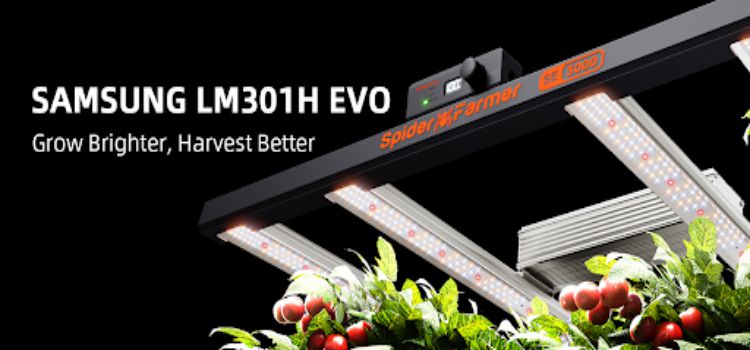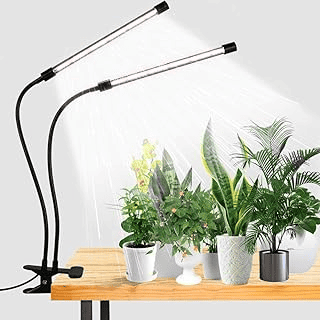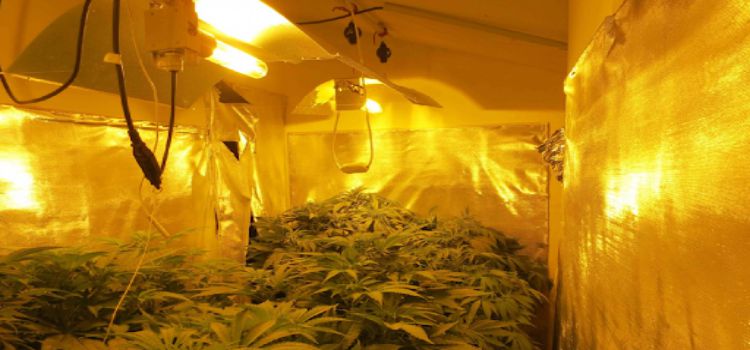Grow lights are commonly used in indoor gardening and horticulture to support plant growth when your plants fail to receive sufficient natural sunlight. However, there are also some concerns about their safety for our humans and eyes.
In this post, we’ll take a quick look at different types of grow lights and discuss whether these grow lights can be harmful to humans.
What Are Grow Lights Used For?
There are several types of grow lights available in 2024. Each type of them has advantages and disadvantages. Here’s a breakdown of the most common types:
LED Grow Lights
LED grow lights are advanced lighting solutions designed to promote plant growth by providing a full spectrum of light that mimics natural sunlight. As these energy-efficient lights use light-emitting diodes (LEDs) to deliver targeted wavelengths essential for photosynthesis, they are ideal for indoor gardening, hydroponics, and greenhouses. Unlike traditional grow lights, LED grow lights emit less heat, reducing the risk of overheating plants and allowing for closer placement to foliage.

On the other hand, a grow light is not specifically a UV light, although some grow lights may emit UV radiation. Grow lights are designed to provide the spectrum of light that plants need for photosynthesis, typically focusing on red and blue wavelengths. While UV lights, primarily emit ultraviolet radiation and are sometimes used to enhance certain plant growth traits or to control pests. While both types of lighting can be beneficial in specific contexts, they serve different primary purposes in horticulture.
Key Features:
- Low energy consumption and heat emission.
- Available in full-spectrum options, mimicking natural sunlight.
- Adjustable light intensity and spectrum for different growth stages.
Fluorescent Grow Lights
Fluorescent grow lights are artificial lighting solutions designed to support indoor gardening and horticulture. These lights are energy-efficient, emitting less heat than traditional incandescent bulbs, which helps maintain optimal growing conditions. Fluorescent grow lights come in various types, including T5, T8, and compact fluorescent lamps (CFLs), making them suitable for a wide range of plants.

Key Feature:
- Cost-effective and energy-efficient.
- Produce low heat, which can reduce the risk of burning plants.
- Good for seedlings and leafy greens.
High-Intensity Discharge (HID) Lights
High-Intensity Discharge (HID) lights are powerful artificial lighting systems commonly used in horticulture and commercial agriculture to promote robust plant growth. These lights produce a high output of bright, intense light by passing an electric current through a gas-filled arc tube, which is typically composed of a mixture of gases and metal halides.
 Key Features:
Key Features:
- High light output, suitable for larger growing areas.
- Metal Halide lights promote vegetative growth, while High-Pressure Sodium lights enhance flowering.
Are Grow Lights Harmful to Humans?
Generally, most grow lights, including LED grow lights, fluorescent lights, and High-Intensity Discharge (HID) lights, are designed for safety and are not bad for humankind, but there are some considerations you need to keep in mind.
UV Radiation
Some grow lights, particularly HID lights, can emit ultraviolet (UV) radiation. While UV light is beneficial for plant growth, excessive exposure to UV rays can be harmful to humans, potentially causing skin irritation or increasing the risk of skin cancer over time. It is advisable to minimize direct exposure to UV light by using protective gear or positioning lights in a way that reduces direct contact.
Blue Light Exposure
LED grow lights, especially those with a high proportion of blue light, have been shown to affect human health by disrupting circadian rhythms. Particularly in the evening, blue light exposure can interfere with sleep patterns and melatonin production, leading to sleep disturbances. To mitigate this effect, it’s beneficial to limit exposure to grow lights at night or use lights that can be adjusted to emit warmer colors during evening hours.
Heat Production
HID lights generate significant heat, which can create an uncomfortable environment if used improperly. Prolonged exposure to high temperatures can lead to discomfort or heat-related illnesses. Proper ventilation and cooling systems are essential to maintain a safe and comfortable growing environment.
Chemical Safety
Some grow lights may be housed in materials that can emit harmful chemicals when heated. It’s important to ensure that any lighting equipment is certified and compliant with safety standards to minimize the risk of chemical exposure.
Are LED Grow Lights Bad for Your Eyes?
LED grow lights can potentially be harmful to your eyes, especially when you take proper precautions. Here are some key points to pay attention to:
- Blue Light Exposure: Many LED grow lights emit a significant amount of blue light, which can cause eye strain and discomfort. Prolonged exposure may contribute to retinal damage over time.
- Brightness: The intensity of LED grow lights can be quite high. Looking directly at these lights can cause temporary visual disturbances or discomfort.
- Flicker: Some LED lights can flicker, which might not be noticeable but can lead to eye fatigue and headaches for sensitive individuals.
Conclusion
Generally, it’s safe to use plant grow lights. However, as they are designed primarily for plant growth rather than human health, you should use them properly. These lights can emit bright light and potentially harmful UV radiation, so prolonged exposure without appropriate protection may lead to eye strain or skin irritation. Nevertheless, they can also have benefits, such as improving indoor lighting and enhancing mood, just like natural sunlight. Overall, while grow lights can be beneficial in certain contexts, you need to take precautions to minimize any negative effects from extended exposure.


